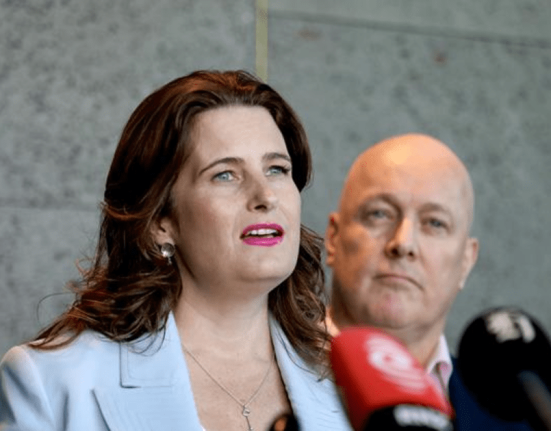Borrowers in default could see their tax refunds or other federal benefits withheld once collections resume.
J. David Ake/Getty Images
The Education Department will resume collecting on defaulted student loans early next month, restarting a system that’s been on hold since spring 2020, the agency announced Monday.
Starting May 5, the department will withhold tax refunds or benefits such as Social Security from borrowers who are in default. Later this summer, the department will begin garnishing the wages of defaulted borrowers, a move consumer protection advocates have criticized as out of control.
About 38 percent of the nearly 43 million student loan borrowers are current on their payments, and a record number of borrowers are at risk of or in delinquency and default, the department said Monday. Borrowers default when they miss at least 270 days of payments.
When the Biden administration restarted student loan payments in September 2023, it offered a one-year grace period for borrowers during which those who didn’t make payments were spared the worst financial consequences, including default.
Research into borrowers who default and other data shows they typically fall behind on their payments because other loans take a higher priority or they can’t afford their payments, among other reasons. And borrowers in default usually don’t have the ability to repay their loans. A survey from the Pew Charitable Trusts found that unemployed borrowers were twice as likely to default compared to those who worked full-time. Additionally, borrowers who didn’t complete the education they took out loans to pay for are more likely to default than completers.
“The folks who fall behind on their payments are those who are least well served by the higher education and repayment systems,” said Sarah Sattelmeyer, project director for education, opportunity and mobility in the higher education initiative at New America, a left-leaning think tank. “A lot of those folks did not receive a return on their higher education investment … These aren’t people who overwhelmingly do not want to pay their loans.”
About 5.3 million borrowers have defaulted on their loans, and many have been in default for more than seven years, according to the department. Another four million borrowers are in “late-stage delinquency,” or 91 to 180 days behind on their payments. The department expects about 10 million or nearly one-quarter of borrowers to default by the fall.
“We think that the federal student loan portfolio is headed toward a fiscal cliff if we don’t start repayment and collections,” a senior department official said on a press call Monday. “American taxpayers can no longer serve as collateral for student loans.”
The official didn’t take questions, and a department spokesperson referred reporters to Education Secretary Linda McMahon’s recent op-ed in The Wall Street Journal. She’s also slated to appear on CNBC and Fox Business to discuss the restart in collections.
In her public statements Monday, McMahon blamed the Biden administration and colleges for the current situation.
“Colleges and universities call themselves nonprofits, but for years they have profited massively off the federal subsidy of loans, hiking tuition and piling up multibillion-dollar endowments while students graduate six figures in the red,” she wrote in the Journal.
Beyond the immediate restart, the senior department official said the department is planning to work with Congress to fix the system so that students can afford their loan payments and to lower the cost of college.
Former Biden administration officials, borrowers and debt-relief advocates have said that efforts to forgive student loans were a way to address systemic failures in the student loan system and to help vulnerable borrowers who were likely to never repay their loans.
The department is planning a “robust communication strategy,” the senior official said, to spread the word to borrowers and share information about their options, such as enrolling in an income-driven repayment plan or loan rehabilitation.
Currently, about 1.8 million borrowers have pending applications for an IDR plan, but the department intends to clear that backlog over the next few weeks, the official said. The department also is planning to email borrowers individually about their options. The outreach plan also includes extending the loan servicers’ call center hours on weekends and weeknights.
Sattelmeyer, who worked in the Office of Federal Student Aid during the Biden administration, said it will be important to ensure borrowers have access to information and the tools such as IDR plans to either get out of or avoid default and then stay on track. She questioned whether the department has enough staff to restart collections effectively, given the recent mass layoffs at the agency.
“The issue is that the system is in disarray right now and there have not been a consistent set of options available for borrowers at the same time that we’re turning back on collections,” she said. “At the end of the day, I think the most important thing is that it does not feel like we have the resources and the staffing in place to make this go smoothly and to ensure that borrowers have support and access to resources and tools.”






